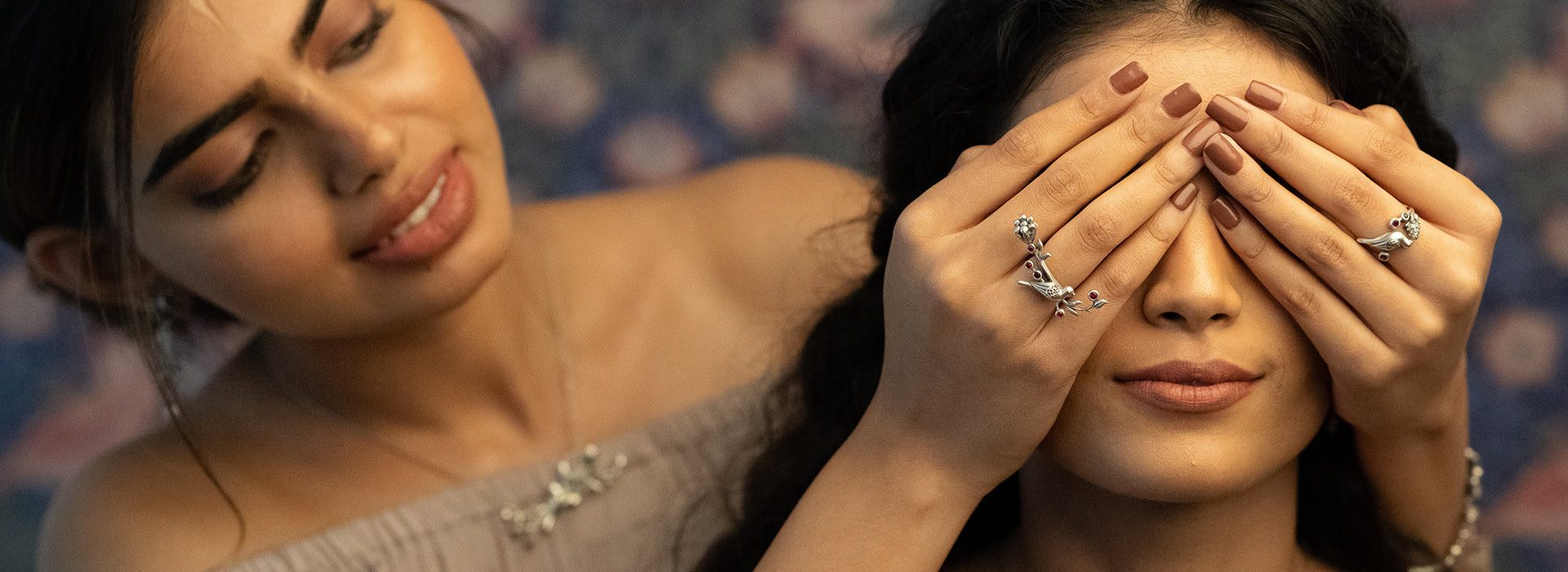Moha carries an undying deep love for tribal, ancient & antique jewellery. So what better way to celebrate the holy festival of Navratri than to give voice to & to highlight jewellery which carries fine craftsmanship? This Navratri, we will be honouring jewellery created by talented minds & hands which have not received their due - pieces which are forgotten & lost in the sands of time. Each day we will be unravelling one stunning piece of jewellery. Today, we will be talking about an old ornament known as the ‘Vanki’.
Indian jewellery is as old as the Indian civilization, dating back to more than 4000 years ago. To Indians, jewellery was not important only for adornment, it was believed to possess good qualities depending on the precious stones and metals used. Some were even used for protection against evil magical forces for eg. the navratna or the nine gems. Till today, Hindus believe that each of these navratna stones are sacred to the nine planets in the solar system.
An Indian marriage is a grand event, a sacred ceremony where two people start a new life together. Both the bride & groom wear a lot of jewellery as it is believed to bless them with good luck & protect them from the evil eye. Among marriage ornaments, south India has a spellbinding variety of gorgeous ones. One such standout piece is the 'Vanki’. The Vanki is a beautiful armlet or a bajubandh always worn around the arm. A fairly simple ornament, the vanki does not scream ‘wedding’ as loudly as other South Indian marriage jewellery does. It can be used even on other occasions after marriage; it has a subtle touch of grandeur & elegance. The Vanki looks best when teamed with short-sleeved blouses as they do justice to its a gorgeous design. The relatively newer forms of the Vanki have designs inlaid with diamonds, rubies or emeralds & sometimes a coiled snake design. The snake design has been adopted from the old traditional Vanki. There are innumerable design forms which include peacocks flanking flowers, rigid & twisted gold wired forms, portraits from the colourful life of Krishna, etc inlaid with precious stones or in plain gold.
Historically speaking, this traditional ornament has been noticed on old temple figurines & sculptures & can be traced back to the times when snake worship & nagas were prevalent. Earliest designs of the Vanki were seen on Lord Krishna. It shows the connection between Lord Vishnu and the snake & thereby to Krishna who is believed to be the incarnation of Lord Vishnu. The symbolism may have also indicated a meaning leaning towards fertility.
The Vanki stands out due to its inverted ‘V’ shaped design. It is designed to perfectly compliment the shape of the arm. The Vanki is thus very dear to all women, not only the south Indian brides; due to its unmatched appeal and beauty. This accessory gives off a very royal look when coupled with traditional attire & is on every woman’s jewellery wishlist!
